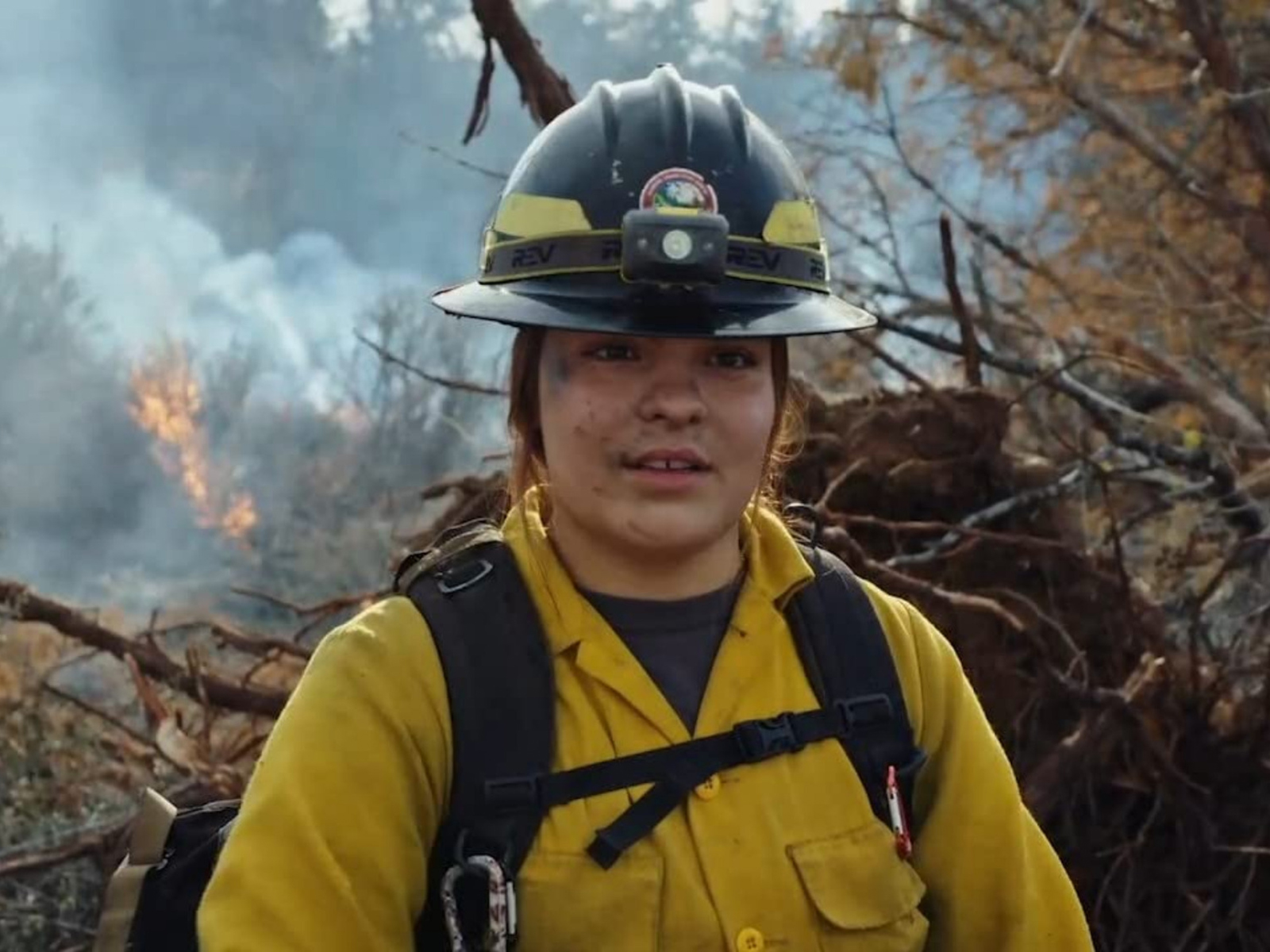
- Festivals
Sundance 2021: Bring Your Own Brigade
Lucy Walker’s Bring Your Own Brigade isn’t the first documentary about the devastation wrought by uncontrolled wildfires that destroyed Paradise, California. In 2020, director Ron Howard’s Rebuilding Paradise also played at the Sundance Film Festival. But it may be the first feature to show the disaster in such graphic detail, relying on cellphone video footage and eyewitness accounts, and to provide a broader historical context. The feature may also benefit from the background and immigrant perspective of writer-director Walker, who relocated from Britain to Los Angeles, and has made Waste Land and The Crash Reel.
On November 8, 2018, a caravan of residents in Paradise watched in horror while red-hot embers dashed across the road and a catastrophic wildfire bore down on them. Earlier that day, the Camp Fire had sparked northeast of Paradise, and people were stuck in standstill traffic trying to escape the flames, wondering if they would make it out in time. Fortunately, the people in that caravan escaped when a firefighter drove a bulldozer up the road, pushing abandoned cars to the side and clearing the way for traffic.
The Camp Fire was the deadliest wildfire in California history and the costliest natural disaster of 2018. It is estimated that 85 people died in the blaze and that the destruction of Paradise, caused over $16 billion in damages, not to mention the human and emotional toll. Walker doesn’t shy away from the tragedy of these recent mega-fires.
Placing the new fires in context, Bring Your Own Brigade revisits the history of land management, logging, and urban development that led to the conditions that primed the forests of the American West for devastating blazes. It turns out that climate change is just one reason for these torching fires in California and other western states, such as Oregon. The film challenges policymakers and viewers to change their perception of fires and to realize that they can actually be fruitfully used as tools in stopping future wildfires.
Walker was motivated by the lack of public understanding of those deadly flames, aiming to provide a more precise yet comprehensive explanation for their frequent occurrence. To that extent, the movie depicts the history of wildfires by focusing on land management and natural stewardship. One of the feature’s most fascinating aspects is the links that it makes to the issue of American colonialism. When colonists engaged in genocidal massacres of indigenous peoples during the Gold Rush, vast amounts of practical knowledge about how to care for the land and prevent devastating fires was erased – along with other traditions of the indigenous peoples.
During the logging boom in the first decades of the 20th century, land managers were preoccupied with suppressing the fires as quickly and as efficiently as possible, instead of letting some fires burn and then naturally thin out the forests. According to Walker, relying on experts, that suppression strategy has backfired and led to forests that contain so much fuel that fires can rip through them more swiftly.
In 2018 after the Camp Fire, various media outlets arrived, wishing to cover the blaze fairly, but they were all telling the same story, says pyrogeographer Zeke Lunder, Pyrogeographers study the past and present of wildfire spreads, while trying to project their future distribution. When Walker approached Lunder, she asked all kinds of questions, wishing to set the agenda for a more informed discourse and public debate about them, in and out of the “fire community.”
In some cases, putting fires out is not only futile but also repeats the failures that predecessors in the fire business have handed down to us. The film suggests that people should learn from past mistakes in the enterprise of land management; there are other obstacles. In Paradise, post-Camp Fire, some residents were against stricter building codes and standards that were designed to prevent another blaze from destroying their homes in the first place.
Trina Cunningham, a member of the Maidu Tribe of Northern California, who is featured here, has cared for her land through the practice of cultural burning, a process of using fire as a tool to regularly burn vegetation away so it doesn’t serve as fuel for bigger fires. Cunningham worked with her late brother to introduce indigenous knowledge of land stewardship into more modern public policy. ‘We were repeating a pattern that isn’t catching,” she says, “I realized that my tribe’s elders had tried to do the same, just like generations before them.”
Cultural burning needs to happen more often, and that message should be amplified. People need to realize that fire can be used as a tool to humanity’s advantage rather than being regarded simply as a harbinger of destruction. ‘We need to be offensive rather than defensive in our approaches,’ Cunningham says. ‘We need to build a relationship with the places and the species that exist in those places to optimize them.’
As expected, emotions were raw in Paradise after the Camp Fire. But in its aftermath, people from different paths have come together to address the problem and start planning for a better future. The diverse group included tribal members and loggers whose ancestors had participated in the genocide of indigenous peoples. But that strange coalition of the unlikeliest members serves as part of the healing process. Lunder holds that “managing land can be an important part of our reconciliation, and it’s reassuring to see us all working together around healing the land.’

